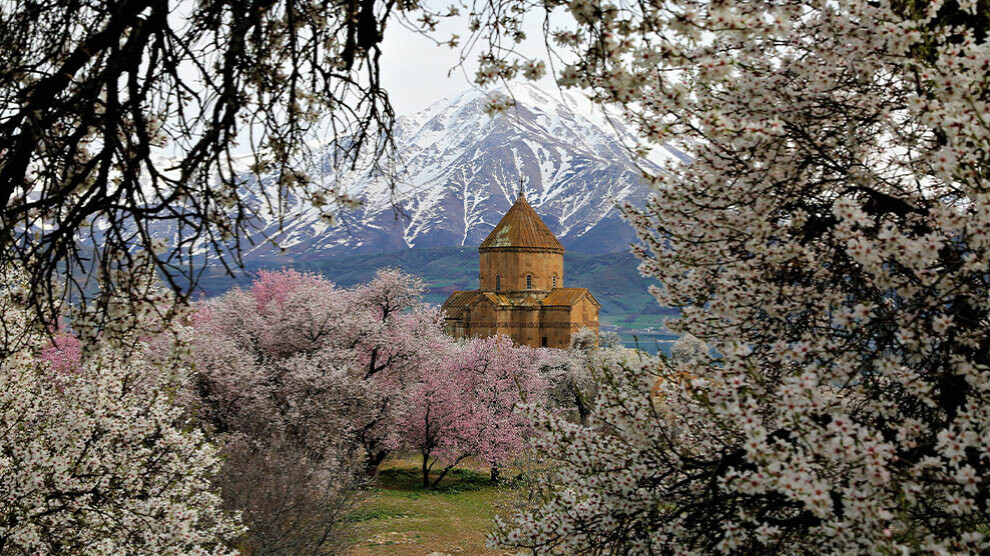Spring reveals beauty of Akhtamar island
The almond trees are blooming in the Akhtamar island, in Lake Van conveying the mood of spring. The island represents one of the most famous historical legacies of the Armenian people in the Ararat Highlands.
The almond trees are blooming in the Akhtamar island, in Lake Van conveying the mood of spring. The island represents one of the most famous historical legacies of the Armenian people in the Ararat Highlands.

The island of Akhtamar in the Westan district near Van lies as a gift from nature in front of the mountains Artos and Sîpan. With its 70,000 square meters, it is the second largest of the four islands in Lake Van and is one of the most famous historical legacies of the Armenian population in the Ararat highlands. Here, the almond trees bloom particularly enchantingly and cheerfully conveying the mood of spring.
© Gökhan Altay | Mezopotamya (MA)
From 908 to 1021 the island of Akhtamar was a palatinate of the Armenian empire Vaspurakan with the then capital Vostan. According to legend, the name of the island is derived from an Armenian king's daughter named Tamar. The island is also called "monastery island". Akhtamar is especially famous for its Surp Khach, the "Church of the Holy Cross".
© Gökhan Altay | Mezopotamya (MA)
The church forms the remainder of a city with a monastery and palace complex built between 915 and 921 by the architect and former sculptor Manuel on behalf of Gagik Arzruni, King of Vaspurakan. Decorated with reliefs, the building is a masterpiece of Armenian stone carving. The outer walls show mostly Old Testament scenes and stories, such as those of Adam and Eve, Jonah and the whale, or David versus Goliath. In addition, 30 animal species were discovered on the reliefs of the church, some of which are now extinct or are about to become extinct. The decorations reflect the fauna of that time in Anatolia. Such a rich sculptural decoration was otherwise unknown at the time. In the west, building sculpture did not begin to develop until about 100 years later. Inside the Kreuzkirche, the walls are painted with partially preserved frescoes. The remains of a settlement and a historic cemetery are still on the island.
© Gökhan Altay | Mezopotamya (MA)
Until 1895 the church on Akhtamar served as a patriarchal cathedral for the regionally important Catholic of Akhtamar of the Armenian Apostolic Church. After the death of the last Catholicos Khachatur III. (1864–1895) the seat remained vacant. In 1910 the diocese of Akhtamar still comprised 130 parishes, 203 churches and 70,000 believers. In the genocide of 1915 the monastery was destroyed, the church looted and the monks killed. In August 1916, almost a year and a half after the beginning of the genocide of the Armenian population, Akhtamar's Catholic was repealed by a resolution of the Ottoman Ministry of Justice and Culture. It was not until 2005 that the Turkish government decided to restore the 1,000-year-old structure.
In 2007 the church on Akhtamar was reopened as a cultural monument. So far, the Turkish government has only allowed eight religious ceremonies. The first service after 95 years took place in September 2010 with more than 4,000 participants. Christian believers held the last service last autumn.